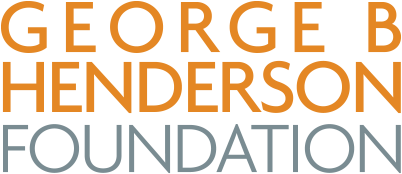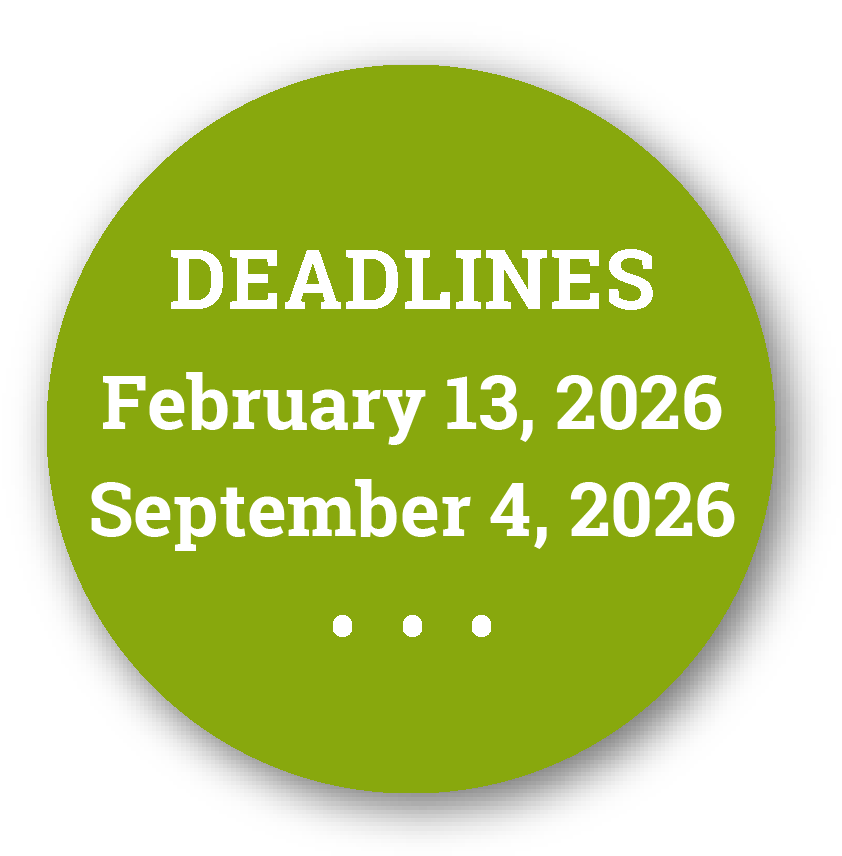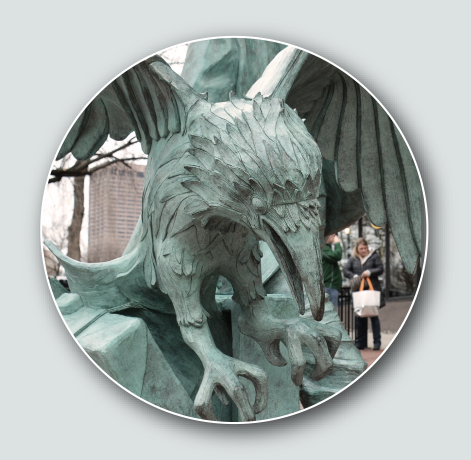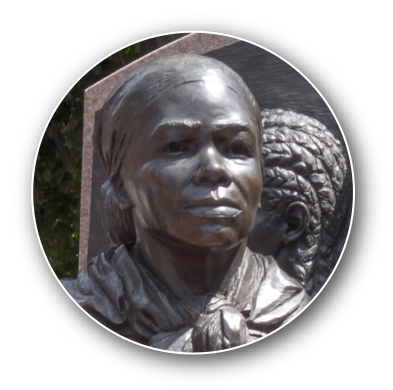

The Henderson Foundation’s grants provide support for projects focused on the enhancement of the appearance and preservation of outdoor elements in the city of Boston. The Foundation encourages applications for projects in all neighborhoods of Boston that concern parks, city streets, buildings, monuments, and architectural and sculptural works.


Through past grants, the Foundation has supported capital projects such as the restoration of historic buildings; creation of new public sculpture and gardens; restoration of historic monuments; and other projects that enhance quality of life and sense of place, while demonstrating design excellence. Grants are made only for projects within Boston city limits and to projects that are accessible and visible to the public. Grants are not made to individuals. Grants are made for restoration and preservation activities, but not for routine care or maintenance (as defined by National Park Service technical standards.)
In 2026, the Designators are particularly interested in requests for support of permanent public art projects and projects focused on outdoor spaces. In addition, the Designators are seeking proposals from projects in neighborhoods that have not been well represented in previous grants, including but not limited to East Boston, South Boston, Mission Hill, Allston/Brighton, Charlestown, Chinatown, Mattapan, Hyde Park, West Roxbury, and Roslindale.


The Henderson Foundation is accepting proposals for two distinct grant programs in 2026—their regular grant program and a mini-grant program. See below for details.
2026 Proposal Deadlines (for both regular grants and mini-grants) - Please note these are earlier dates than in prior years.
The Henderson Foundation will hold two grant rounds in 2026:
ROUND I
Deadline: Friday, February 13, 2026
Decisions: Late March/early April
ROUND II
Deadline: Friday, September 4, 2026
Decisions: Late October/early November
Applications must be received through the online portal by 5 P.M. on the day of the deadline.
The Designators will host a virtual applicant forum before each grant round. Pre-registration for the Forum is required and open to all potential applicants. The session will be recorded for those who cannot attend “live.”
ROUND I Forum
Thursday, January 15, 2026
Registration: Register here.
ROUND II Forum
Thursday, July 30, 2026
Registration: Will open on June 1, 2026
The Henderson Foundation’s grants provide support for projects focused on the enhancement of the appearance and preservation of outdoor elements in the city of Boston. The Foundation encourages applications for projects in all neighborhoods of Boston that concern parks, city streets, buildings, monuments, and architectural and sculptural works.
Projects submitted for the ROUND I GRANT PROGRAMS must be completed and able to seek reimbursement no later than December 31, 2026.
Projects submitted for the ROUND II GRANT PROGRAMS must be completed and able to seek reimbursement no later than December 31, 2027.
Most grants awarded in the regular grants program will be in the $20,000-$50,000 range, but the Designators will consider all projects that fulfill the Foundation’s goals and offer outstanding benefit to the community. Grants above $50,000 are very rare exceptions. If you are applying for more than $50,000, your application should describe in detail why you are seeking a larger grant. The Designators discourage first time applicants from requesting more than $50,000.
Through past grants, the Foundation has supported capital projects such as the restoration of historic buildings; creation of new public sculpture and gardens; restoration of historic monuments; creation of new public outdoor spaces; and other projects that enhance quality of life and sense of place, while demonstrating design excellence. Grants are made only for projects within Boston city limits and to projects that are accessible and visible to the public. Grants are not made to individuals. Grants are made for restoration and preservation activities, but not for routine care or maintenance (as defined by National Park Service technical standards.)
In 2026, the Designators are particularly interested in requests for support of permanent public art projects and projects focused on community-based outdoor spaces. In addition, the Designators are seeking proposals from projects in neighborhoods that have not been well represented in previous grants, including but not limited to East Boston, South Boston, Mission Hill, Allston/Brighton, Charlestown, Chinatown, Mattapan, Hyde Park, West Roxbury, and Roslindale.
In 2026, the Designators have reserved up to $40,000 in 2025 for a Mini-Grants program. This program will provide grants of up to $7,500 for immediate implementation of community and neighborhood-based public outdoor space and public art projects. Mini-grants are not available for historic preservation projects (those should apply to the full grants program). Funds may be requested to support purchasing of items or elements for the fabrication of permanent public art (such as murals, sculptures, installations, or other works) or for permanent improvements to outdoor public spaces (such as public or community gardens, parks, roadway islands, publicly accessible roof-top gardens, shade structures, sidewalk furnishings, or other amenities that beautify the public realm).
Please note: the Mini-Grants Program is not intended to support a budget gap in a larger program that would be better suited to applying to the Regular Grants Program.
Design quality and artistic value are important factors in selection, since the goal is to bring beauty to the lives of Bostonians and to Boston’s public spaces. Fees for services (such as design fees) are generally not eligible for coverage by the grant. The Designators strongly prefer that their funds support hard costs and will consider funding soft costs only if they are integral to the installed, final product (such as artist’s fees). Applications must be for projects within Boston city limits. The Foundation will not make grants to individuals. However, individual artists and designers, community groups, youth groups, faith-based groups, or neighborhood groups may work with a qualified nonprofit as a fiscal sponsor.
The projects funded by the Round I Mini-Grants Program must be able to be completed no later than December 30, 2026 and for ROUND II by June 30, 2027.
Current guidelines, as well as a recent grants list, are available for download at thehendersonfoundation.com.


Applicants must be an exempt organization under IRC section 501(c)(3), or submit using a qualified fiscal sponsor that qualifies under IRC section 501(c)(3). Projects must be within the city of Boston.
Grants are not made for general fund drives, endowments, operating or staffing costs, planning or design studies, or construction of playgrounds or tot lots.
PRESERVATION IS DEFINED AS the act or process of applying measures necessary to sustain the existing form, integrity, and materials of an historic property. Protection, maintenance, and repair are emphasized while replacement is minimized.
RESTORATION IS DEFINED AS the act or process of accurately depicting the form, features, and character of a property as it appeared at a particular period of time by means of the removal of features from other periods in its history and reconstruction of missing features from the restoration period.
The Foundation encourages consideration of environmental and sustainable practices whenever applicable.
The Designators consider the following criteria as part of their grant review:



The Designators meet at least once per year to review and award grants. The schedule for grant deadlines is set in the first quarter of each year. Funding decisions are usually made six to eight weeks after deadlines. The Designators will hold two grant rounds in 2026.
All applications should be submitted through the Hemenway & Barnes online application portal at:
https://goapply2.akoyago.com/hembar.
Detailed instructions as to how to create an account and password assistance can be found at the following links. Once you log in you will be required to choose an application type—Regular Grants Program or Mini-Grants Program.
Create an Account
https://goapply2.akoyago.com/hembar/
How to Register Guide
https://hembar.com/assets/HB-2422817-v2-HEMBAR_GOapply_Applicant_Guide_June_2024_2024-06-26-202535_cmbt.pdf
Password Guide
https://hembar.com/assets/HB-2422817-v2-HEMBAR_GOapply_Applicant_Guide_June_2024.pdf
Applications must be received through the online grant portal by 5:00 P.M. on the day of the proposal deadline. Please direct any questions to Ms. Gioia Perugini, Foundation Administrator at GPerugini@hembar.com or 617.557.9777. Technical questions on the grant application portal should be directed to Rita Goldberg, Senior Grants Manager, at RGoldberg@hembar.com or 617.557.9774.
Proposals to the Regular Grants Program must include:
1. Cover Form
Please note in the online application, you will fill out the cover form for the following sections of the outline below.
2. Proposal Narrative: The proposal narrative will be submitted as a file upload named “Proposal Narrative – [name of applicant].” The narrative should include the following sections of the outline below (5 page maximum).
3. Budget: The program budget will be uploaded as a separate file and should include the following sections of the outline below. Please upload as a PDF (not Excel or Word) using the file name “Program Budget – [name of applicant].”
4. Proposal Exhibits: Exhibits must include visual representation of the proposed project and/or site, including but not limited to plans or other visual materials directly relevant to your project, sufficient to give reviewers an understanding of the current conditions at the site and what will be accomplished and changed through the proposed project.
In the online application, you may upload three proposal exhibits, and one document containing up to three letters of support. Proposal exhibit files are often large and should be compressed before uploading. Maximum file size is 15 MB. If your file size exceeds 15 MB, please contact us directly for other ways to submit very large documents. Please name file “Exhibit A (B, C) – [name of applicant]” for exhibits and “Letters of Support – [name of applicant]” for support letters.
5. Proposal Attachments: You may upload these attachments in the noted attachment section of the online application portal.
For the Mini-Grants Program, the Designators have designed a streamlined application process. Applicants interested in a mini-grant should complete an initial application with the following information. The Designators will review initial application and concept outline and may request detailed documentation before awarding funds. The mini-grant application process should include the following:
1. Cover Form: Please note in the online application, you will fill out the cover form which asks for the following information:
2. Proposal Narrative: The proposal narrative file upload should be named “Proposal Narrative – [name of applicant]” and include the following of the outline below, with a maximum of 5 pages.
3. Budget: The program budget may be uploaded as a separate file named “Program Budget – [name of applicant]” and include the following sections of the outline below:
4. Proposal Exhibits: Please include a visual representation of the proposed project and/or site, including but not limited to photos, plans, or other visual materials directly relevant to your project, sufficient to give reviewers an understanding of the current conditions at the site and what will be accomplished and changed through the proposed project.
In the online application, you may upload three proposal exhibits, and one document containing up to three letters of support or individual letters of support, as needed. Proposal exhibit files are often large and should be compressed before uploading. Maximum file size is 15 MB. If your file size exceeds 15 MB, please contact us directly for other ways to submit very large documents. Please name file “Exhibit A (B, C) – [name of applicant]” for exhibits and “Letters of Support – [name of applicant]” for support letters.
General
Narrative
Supporting Materials
Submissions/Portal
Please direct any questions to Ms. Gioia Perugini, Foundation Administrator, at GPerugini@hembar.com or at 617.557.9777.
Technical questions on the grant application portal should be directed to Rita Goldberg, Senior Grants Manager, at RGoldberg@hembar.com or 617.557.9774.


A carefully prepared grant application that adheres to the printed guidelines and tips for grant applications is critical. Please review the full guidelines carefully before submitting your proposal. Below are some frequently asked questions to help guide you.
What’s the best way to tell you about our organization or project?
Do not assume that your organization, the project, or project location are known to reviewers; all requested information and attachments should be provided, even for repeat applicants. If there is a specific or noteworthy history to your building or facility, please share that history in your application.
Do you need information about my community or constituency?
The need for the project should be clearly stated, and the case for how the proposed project will meet community needs or aspirations should be succinctly presented. In order to better understand neighborhood context, illustrations or renderings that show the project from the pedestrian point of view are welcome.
Does the size of my organization matter?
The Foundation welcomes applications from nonprofits of all sizes and grant sizes range from small (under $5,000) to a maximum of $50,000. The Designators will hold an Applicant Forum each year so that applicants may meet with the Foundation and learn more about its giving priorities. Should you need assistance with proposal writing, there are many resources available in Boston, including but not limited to Philanthropy Massachusetts (philanthropyma.org) and the Massachusetts Nonprofit Network (massnonprofitnet.org).
Does it matter who does the preservation or restoration work?
The Foundation expects that professional planning for the project will have taken place prior to the application. The professional expertise of those responsible for the project is an important consideration that will be evaluated. For example, a preservation project is expected to involve a qualified preservation architect; a conservation project is expected to involve a well-qualified conservator; a landscape project is expected to be designed by a qualified landscape architect. Contractors performing the work should have prior experience with similar professional projects of recognized high quality.
What information should I include about other funders?
Project funding sources must be identified, whether received or proposed. Reviewers will consider whether the funding plan is thorough and realistic given the Foundation’s knowledge of funding sources, the applicant’s budget and resources, and the history of fundraising by the applicant. If your organization or project has been previously supported by the Foundation, please discuss your efforts to expand your fundraising from other sources.
What information do you require regarding maintenance?
Maintenance of the project after completion is a key component of proposal evaluation. State who will maintain the project, how annual and long term maintenance and repairs will be funded, and whether any endowment will exist for the care of the project.
What are the Foundation’s expectations for recognition?
Recognition of the Foundation’s contribution may be made in newsletters, press releases, media announcements, annual reports, on the organization’s web site, or through social media channels; by invitation of the Board of Designators to attend project events; and on plaques or other long term recognition if those are planned for the project. The level of recognition is expected to be proportionate to the scale of the Foundation’s contribution to the full project budget. Grant expectations and guidelines will be sent with the award letter.
How do you define public access?
The Foundation requires projects to be “visible to the public, preferably from a public way.” Applicants should provide detail as to the level of public access to both the building in question as well as to the specific project component. If the building is open limited hours, please specify the times it is open to the public.
What part of the project will the Henderson Foundation support?
The Designators prefer that their funds support hard costs (construction, fabrication, materials), but will consider a portion of soft costs (architects, planners, contractors) as needed and on a case-by-case basis.

